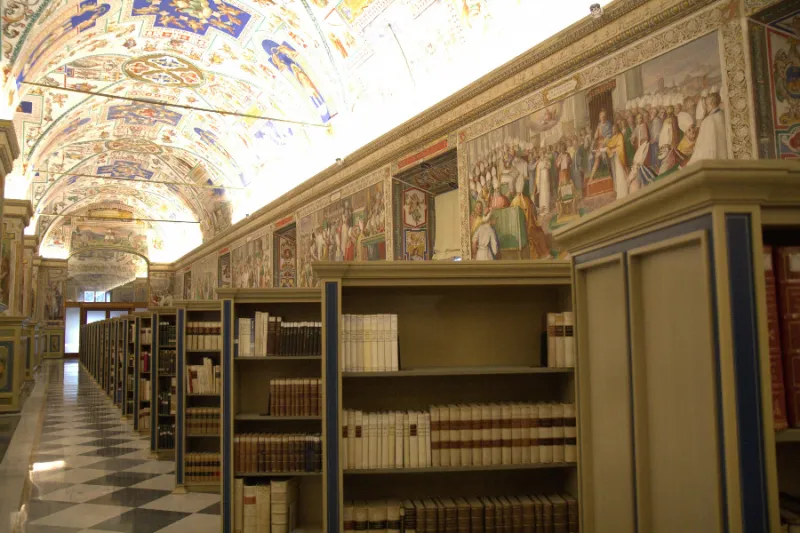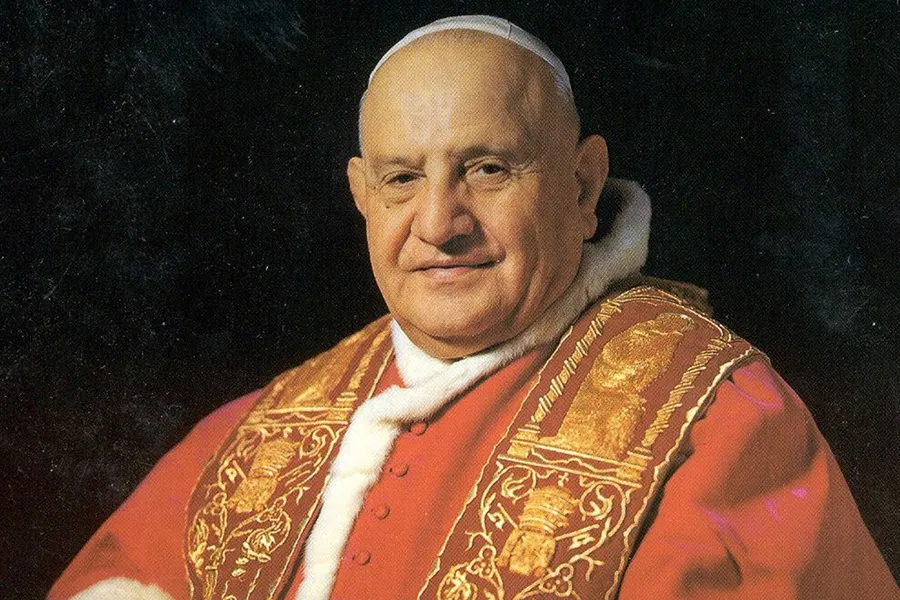
Vatican City, Nov 3, 2021 / 14:00 pm (CNA).
The Vatican’s historic library has created a new space for hosting temporary art exhibitions.
Pope Francis will inaugurate the gallery and visit its first exhibit on Nov. 5.
The Vatican’s librarian Cardinal José Tolentino de Mendonça said in a Nov. 3 press release: “The Vatican Apostolic Library inaugurates a new exhibition hall to support the culture of encounter.”
“Our challenge is to strengthen the cultural role of the Vatican in the contemporary world,” he added, describing the contrast between ancient works and contemporary art as “history meet[ing] the present.”
The modern iteration of the papal library is believed to date back to the 14th century, though there is evidence that the Catholic Church has preserved a library and archive from as early as the fourth century.
The building that houses the library today was built in the latter part of the 16th century.
From November through the end of February, the new exhibition hall will display unpublished works by the contemporary artist Pietro Ruffo in an exhibit called “EVERYONE: Humanity on its way.”
The Roman artist said that “the encounter with the immense patrimony of the Vatican Apostolic Library was for me a journey into knowledge, geography, and the history of humanity.”
The Vatican said that historic treasures from the library would also be on display, including a nearly 20-feet-long map of the Nile, created by Ottoman explorer Evliya Çelebi in the 17th century.
The map, according to the Vatican’s press release, will be “in dialogue” with artist Ruffo’s contemporary “reinterpretation.”
“The dialogue between my research and the terrestrial and celestial maps of different eras and cultures outlines a humanity that is increasingly interconnected and responsible for the fragile relationship with its ecosystem,” the artist said.
In the Vatican Library’s Sala Barberini, a narrow room lined with 17th-century wooden bookshelves, Ruffo has built “a site-specific installation that transforms the space into a lush tropical forest,” the Vatican said.
The exhibit will be open to the public every Tuesday and Wednesday from 4 p.m. to 6 p.m. by reservation.
According to its website, the Vatican Library “preserves over 180,000 manuscripts (including archival units), 1,600,000 printed books, about 9,000 incunabula, over 300,000 coins and medals, more than 150,000 prints, thousands of drawings and engravings and over 200,000 photographs.”
If you value the news and views Catholic World Report provides, please consider donating to support our efforts. Your contribution will help us continue to make CWR available to all readers worldwide for free, without a subscription. Thank you for your generosity!
Click here for more information on donating to CWR. Click here to sign up for our newsletter.





I suppose only fully “vaccinated” people will be able to visit….sigh